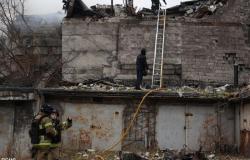During the First World War, the French colonies were also in demand. Thousands of African and Malagasy soldiers were enlisted to compensate for the heavy human losses. The Indian Ocean islands, notably Mayotte and the Comoros, are also involved, although this part of the story often remains forgotten.
The D'Achery, the Marot, the Montchery, the Ballou, the Giraud or the Picot… well-known names which appear among the list of participants in the First World War. But there are also anonymous people from the “native” population of Mayotte.
•
©DR
From the start of hostilities in August 1914, the governor of Madagascar and its dependencies, Albert Picquié, mobilized the region's military forces. However, in Mayotte, the call for war seems distant for a population little concerned by European events and still self-sufficient. Initially, recruitment targets French citizens, mainly Europeans but also potentially some natives or assimilated foreigners.
Out of a population of 13,783 Mahorais, 208 can be mobilized. The Ministry of War is reluctant to enlist Comorians because of their cultural and dietary specificities. Local notables and religious leaders also dissuaded young men from leaving, while certain settlers feared a shortage of labor for their plantations.
Despite these reluctances, around 35 Mahorais were enlisted in 1917. According to historian Isabelle Denis, the Comoros contingent had more than 1,000 soldiers, distributed as follows: 60% from Grande Comore, 25% from Anjouan and 10% from Mayotte. and Mohéli. To encourage commitments, France offers financial aid for families and promises sustainable income to volunteers. These soldiers, often integrated into Malagasy or Somali battalions, make their way to the European fronts in trying conditions.
The journey to Europe is long and difficult. After regrouping and medical examinations, Comoros soldiers were embarked for Madagascar, then towards Europe, with stopovers in Mombasa and Port Said. Some desert or commit suicide along the way, showing anguish in the face of the unknown. Arriving in France, they are welcomed at the Saint-Raphaël military camp for an adaptation phase before being deployed. Moussa Mouraba from Mayotte, fell during the Battle of Mont-de-Choisy in 1918
•
©Panturi
Although the participation of Comorian soldiers often remains in the shadows, some of them fight on the front line. The 1st battalion of Somali riflemen, made up of 1,700 men including 75 Comorians, took part in the clashes at Verdun and the capture of Fort Douaumont in 1916. Others, assigned to support tasks, grew impatient, aspiring to fight alongside the poilus. During the Battle of Mont-de-Choisy in 1918, Comorian soldiers lost their lives, among them Moussa Mouraba, originally from Mayotte.
The return of the riflemen, after the armistice of 1918, was tinged with trauma and silence. These soldiers, often marked by the brutality of combat, return to a modest life on their islands. Yet their sacrifice remains ignored for a long time. It was only in 2013 that the commune of Pamandzi in Mayotte erected a stele in memory of the Mahorese soldiers who fell for France.
Partial tribute had already been paid to the Comorian riflemen in 1920 with the rehabilitation of the Moroni mosque, but the history of their engagement remains largely unknown.





